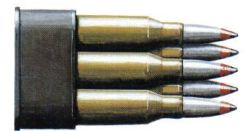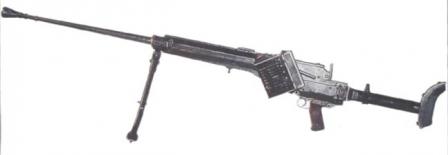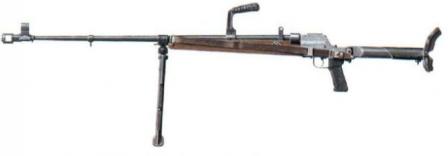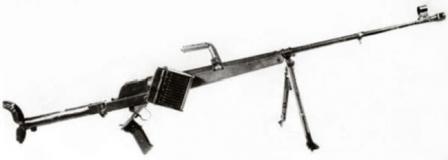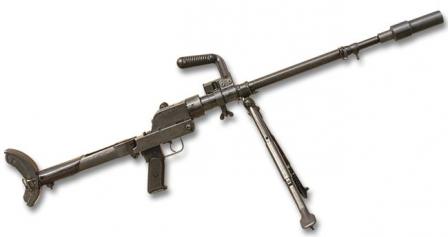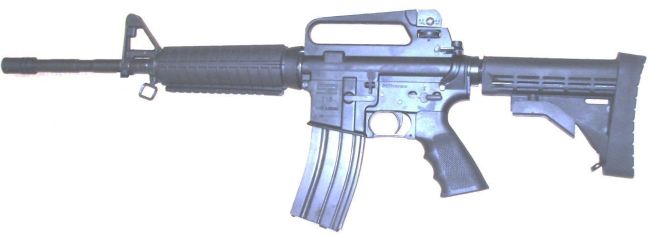Type 97 anti-tank rifle, less magazine.
Type 97 anti-tank rifle, with magazine and carrying handles attached.
| Type / action | full automatic, gas operated |
| Caliber | 20x125 |
| Weight unloaded | 50 kg |
| Length | 2100 mm |
| Barrel length | 1250 mm |
| Magazine capacity | 7 rounds |
| Armor penetration (Range / Angle / Penetration) | 250 m / 90o / 30 mm |
The Type 97 anti-tank rifle was adopted by Imperial Japanese army in 1937 (2597th year by contemporary Japanese calendar), as a dedicated anti-tank weapon. While not sufficiently effective against medium and heavy American tanks, it was good enough to deal with light tanks, landing crafts, small surface vessels and improvised pill-boxes, used by US and allied forces in Pacific theatre during WW2. It was one of the heaviest weapons in its class, especially when fitted with low-profile armor shield and dual carrying handles, which raised the weight of the system to some 68 kg (150 lbs).
The Type 97 anti-tank rifle is gas operated, full automatic only weapon (rate of fire - unknown). It used two gas pistons located below the barrel. The bolt locking is achieved by vertically sliding locking block, which is installed at the top of the bolt. When in battery, this locking block is forced up by cam surface in the bolt carrier to engage the slot cut in the receiver. After discharge, rearward movement of the gas piston and bolt carrier forces the locking block to fall down and unblock the bolt; after that, bolt is free to recoil along with bolt carrier. Firing is from open bolt position, in full automatic mode only. To reduce peak recoil forces, the receiver with barrel and action are allowed to recoil agains the cradle, compressing massive spring buffer. Barrel is equipped with muzzle brake to further decrease the recoil. Feed is from top-mounted detachable box magazines. Standard iron sights are graduated up to 1000 meters in range. To provide necessary stability when aiming and firing the gun, it is equipped with folding bipod and an adjustable monopod under the butt. Additional accesories include detachable armored shield which is installed in front of the magazine, and pair of detachable U-shaped carrying handles, so the gun can be carried over the batlefield by three of four men.


 21.46
21.46
 Jack The Ripper
Jack The Ripper








